
made by the author with copilot
Tournament Formats in Professional Chess
Getting the conversation started on the drawbacks of ubiquitous formatsThe Cascatelli
In 2021, Dan Pashman of the Sporkful Podcast came up with the following thought: spaghetti sucks as a pasta shape. While a little tongue-in-cheek and acknowledging that the spaghetti shape is part of our cultural heritage, how about designing a new great pasta shape? He defined three core components of
- Sauceability: How readily sauce adheres to the shape
- Forkability: How easy it is to get the shape on your fork and keep it there
- Toothsinkability: How satisfying it is to sink your teeth into it
Dan designed a pasta shape to satisfy his three criteria: the Cascatelli.
I’m not suggesting producing pasta shapes inspired by chess pieces (a knightini would be tasty though). But I’m asking: why don’t we try to step back and think about improving ubiquitous chess tournament formats?
Just like the Cascatelli isn’t designed to replace other pasta shapes but offers a great alternative, we could see more formats in professional chess tournaments. Of course, there will always be Swiss and Round-Robin tournaments, just like there will always be spaghetti on the shelves of shops.
I’m not claiming to have solved anything, there is no magic bullet, but there must be a bigger space for thought and experimentation in the chess world. Let’s get the conversation started!
What makes a great tournament
What are our sauceability, forkability, toothsinkability requirements of a chess tournament?
- Be player-friendly. Players are at the centre of chess, they must be respected, and compete in fair conditions.
- Be spectator-friendly. The key element for the spectator to be engaged is to be immersed in the story of the tournament. Tournaments must produce a narrative arc that culminates in crowning a winner. Spectators should also be able to understand the format easily.
The Narrative Arc - Spectator friendliness
Imagine the FIFA World Cup Final. Messi vs Mbappe. The culmination of a month of competition, the dream game, all of the eyes of the world ... but Argentina has already won and the game counts for nothing.
Or Federer vs Nadal meeting in the middle of a tennis tournament and ... agreeing not to compete just to ensure qualification to a later round.
In both cases, the bond with the public is broken. Every game must progress the narrative arc of the tournament and be meaningful.
Round-robin woes
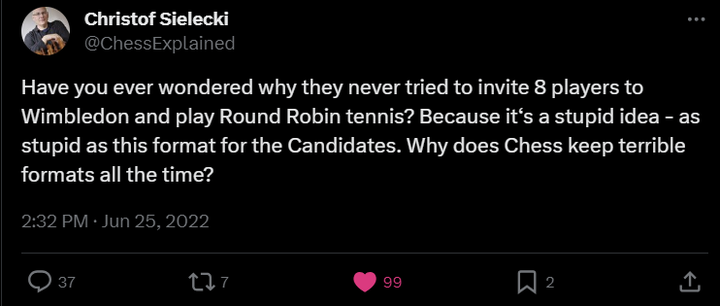
In a round-robin, every player plays all the other players (once or twice) according to a pre-determined schedule. Now, there may be fantastic tension and a great finale in a Round Robin, but that’s also not the most likely outcome. Therefore why would you leave the format as such in the ‘hope’ it produces a great narrative story?
If a player does extremely well he may be guaranteed the win before the final round. Terrible for spectators (imagine you had a ticket to the final, or made special plans to watch it). And even worse for Sponsors. Typically the advertising slots will be the highest for the final (think of the legendary Super Bowl costs). But if no one tunes to the final day, how would you justify charging more to your advertisers?
Players are put in a kingmaking situation where exerting max effort, or not, does nothing with their standing but is a huge deal for others and the tournament as a whole.
Read this previous sentence again. To me, it’s bonkers that the Candidates tournament can be determined by the effort of the last-placed player, someone with no chances at all. If they exert their full strength in the earlier stages of the tournament, they’re very unlikely to be as motivated in the later stages of the tournament. I am rooting for an exciting event and a last round full of drama, but format doesn’t ensure that.
I won’t even mention that Round Robin is the most vulnerable to collusion, and there is indeed a very rich and documented history of this during Cold War chess.
Swiss System
The Swiss system cures one definitive weakness of the Round Robin: in a Swiss tournament the final Round won’t pair the lowest and the top player, but would pair two top players. We’re still left with the critical problem of a runaway leader that would destroy all tension on the final day ... not to mention that all the games being played on the lower boards are of little interest to players and are there to provide a ranking.
Another serious flaw is the very popular use of the Swiss system as a ‘qualification’ system. If you’re near the top, both players are incentivized to make a draw and not take any risks. This is not Spectator Friendly.
But the biggest problem of the Swiss system, indeed, is its failure to guarantee a build-up of the narrative - it can happen, but it’s not guaranteed by design.
Idiotic tie-break
Imagine the FIFA World Cup final, and it’s penalty kicks to decide who will lift the cup. But at 5-5, no one celebrates. No one knows if Messi or Mbappe will lift the cup in a minute, because the result of Cap Verde vs Andorra - still being played - will decide the winner of the final through the tie-break mechanism.
If you think this is a far-fetched hypothetical scenario ... well ... this has happened in the chess world at the 2018 Olympiad and at the 2021 and 2023 European Championships. This was discussed extensively by Peter Heine Nielsen and David Smerdon. But nothing is done and the upcoming Olympiad will still have this incomprehensible tie-break system, which manages the incredible feat of being triple unfriendly to Players, Spectators, and Sponsors.
Player friendliness
As a player, you want to ... play, and play meaningful games if possible. Player friendliness is the biggest drawback of the elimination format. In tennis, a player who is qualified for Wimbledon shows up, plays and loses, and has to pack his bags, leaves with ... 70k USD. At the Chess World Cup, in 2023 it was 3k USD. Barely enough to cover for travel and accommodation. Chess OTB knock-out format has a chicken and egg problem: the regular tournaments aren’t spectator-friendly enough, so chess is not sponsor-friendly enough, so the rare elimination tournaments have a small prize fund that makes them player unfriendly.
Online the situation is very different because you do not travel, so if you lose in an early round there is no cost.
Sponsor Friendliness
The two most nonsensical things done in the name of Sponsor friendliness go directly against Spectator Friendliness and Player Friendliness. In fairness, they are made by the organiser, but I’m conflating both in the current professional chess environment
- Spectators are endlessly confused by the start date of the tournament not being the date of the first game. Why on earth should the ‘Opening ceremony’ have its own date in the calendar. Organisers can have all the gala dinners they want, please let’s stop telling the public they are part of the tournament!
- Stop disturbing the routine of players by having a special start time in the final round. I could copy-paste this one hundred times. It’s such a common player complaint, and yet nothing is done.
Players who are used to playing their best all over two weeks, all of a sudden have their habits upended.
Why do people need hours for a medals ceremony? No other sport does this. It also disturbs the public which has been used to tune at the same time for the whole competition (and in turn, makes broadcasting less predictable).
In the past years, rest days used to be regularly during week-ends, where viewership is of course a lot higher. This has thankfully been mostly corrected.
Theorycrafting the Olympiad 2.0
The Olympiad is a competition between national teams from all around the world (more precisely, the chess federations). Let’s create our new Olympiad 2.0, player-friendly, spectator-friendly, and sponsor-friendly.
Non-negotiable requirements
The Olympiad is at the same time an elite competition and a big reunion of the chess family for teams around the world. It is therefore extremely important to be Player Friendly first and foremost. This means our format must not send teams home early.
The spectator-friendliness is a non-negotiable. To attract broadcast sponsorship we must be Spectator Friendly. At the Olympiad, the audience is naturally invested in how well your own country does (and maybe a few favourites). This is usually a little ‘flat’ as there is not much to win if you’re in the mid-table, and games can feel a little meaningless. In addition, the tournament must by design lead to an exciting final day. Therefore we will get rid completely of the Swiss system, and make every game meaningful.
Division systems
Let’s create a set of Divisions with every division having 32 teams. At the end, there will be 8 relegated and 8 promoted teams. The Competitions will be structured in the following way: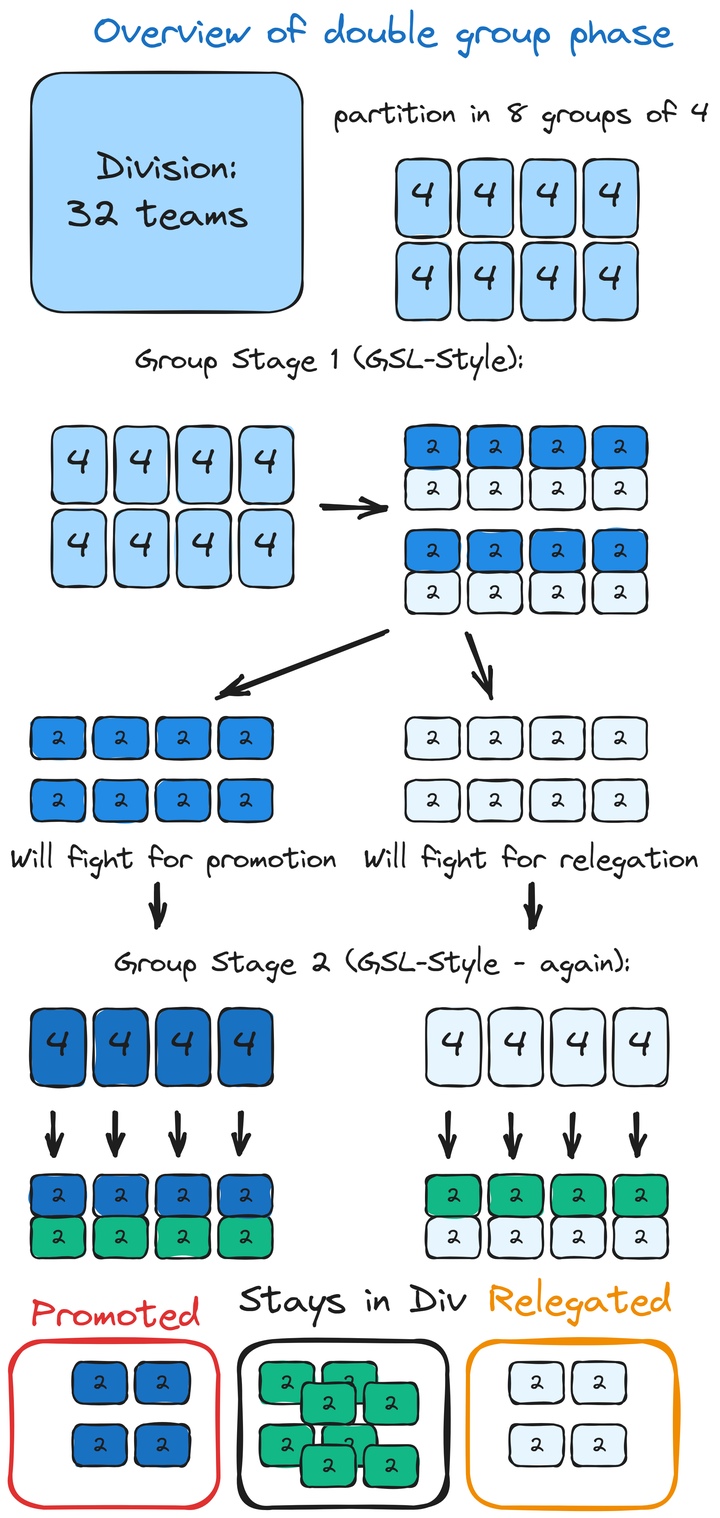
- A first Group stage of 8 groups of 4 teams will split teams into two: the top 16 teams will fight for promotion, and the bottom 16 teams will fight for relegation.
- A second group stage will decide between promotion between 4 groups of 4 teams, and relegation between 4 groups of 4 teams.
At the end of these group stages, we have 4 baskets of 8 teams: 8 promoted, 8x2 maintaining, and 8 relegated. Now starts the playoff phase for each of these groups of 8. It is a double-elimination bracket but with a single grand final.We have managed to separate the division into these three groups with every match being important and therefore great for spectators. The cost of this is minor: some teams will play only 4 matches and some will play 6 matches.
Groups: the GSL-style system for groups of four
How to manage groups of 4? The worst thing to do would be a Round Robin! Again, that would lead to potentially meaningless games and the whims of someone already out of competition. Esports have a solution with the so-called “GSL Brackets”: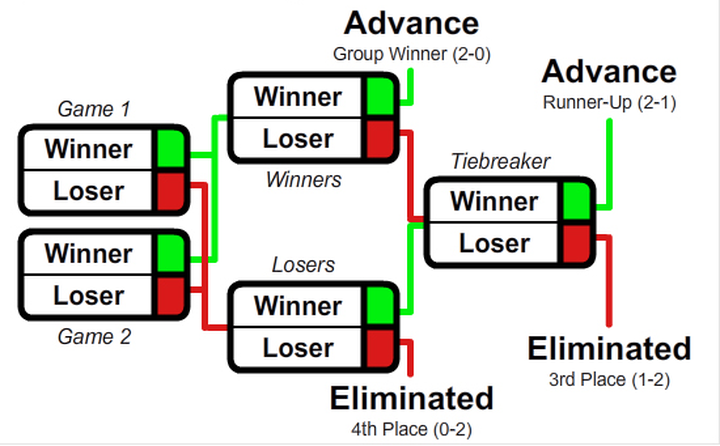
With these, every game is meaningful. Teams are in full control of their destiny at every point. The main price to pay for this is: that teams don’t play the same amount of games: two teams will play two games (the 2-0 team and the 0-2 team) and the other two will play a third final game. I don’t think that’s a problem broadcast-wise, we can have a day with fewer teams playing and the others rest.
Now you may look at this double group stage and think it’s overly complex, or not needed. Just like the pasta shape, we took a clear objective (spectator and broadcast friendliness) and created a trouble group structure where every game is meaningful.
KO phase
I think the KO should be a double elimination bracket (if you lose, you go down to a loser’s bracket). But with a single grand final for maximum impact. I understand the reasoning that ‘every player should have two lives’ but I dislike ‘Grand Final Resets’ - it the match the final or not? Finals resets are confusing for spectators, and for OTB chess, make planning very difficult.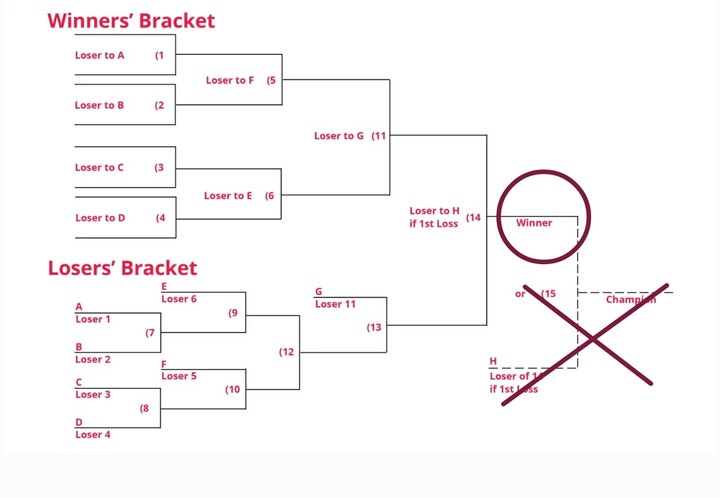
Therefore the minimum number of games in the KO phase is 2 (two losses) and the maximum is 6.
Therefore the tournament will be 6 days of group stages, a rest day, and six more days of KO Stage. The winner of the KO for top division is the Olympiad Champion, and we would have division winners as well.
Now the problem is: how to make sure that every single match between two teams has a winner - well I can’t solve all of chess’ problems in one post! This is a tricky part. We can play around with formats, maybe that would be a great topic for another post.
A change is possible
The Cascatelli shape went viral and got produced - you can buy it but it’s fairly expensive because produced in special small batches.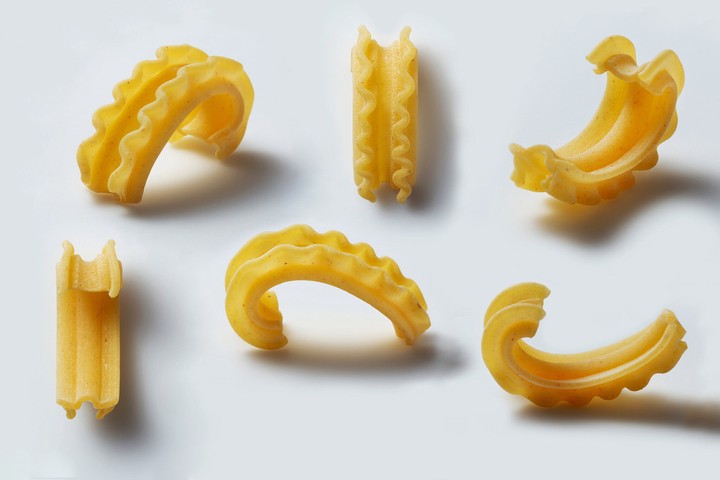
This is an inspiration: change is possible. Even in a world of Spaghetti and Round Robins! One day, the most glaring problems of current tournaments will be changed to make chess a lot more spectator-, player-, and sponsor-friendly. And everyone will wonder why nothing was changed sooner!
You may also like
 GM NoelStuder
GM NoelStuderWhy You Shouldn't Always Trust The Engine
Sometimes the Top Engine move is not the move you should play in a game. This Newsletter explains wh… NM RyanVelez
NM RyanVelez10 Pin Defenses
Are there reliable pin defenses? BenjiPortheault
BenjiPortheaultYou are not your rating
Stop treating yourself only as improvement project BenjiPortheault
BenjiPortheaultThe War on Attention
I’m done consuming chess content NM MrPushwood
NM MrPushwoodOvercompetitiveness in Chess
Yep, sometimes it can really start to look like Tweedledum and Tweedledee out there...or maybe that … airfloo
airfloo